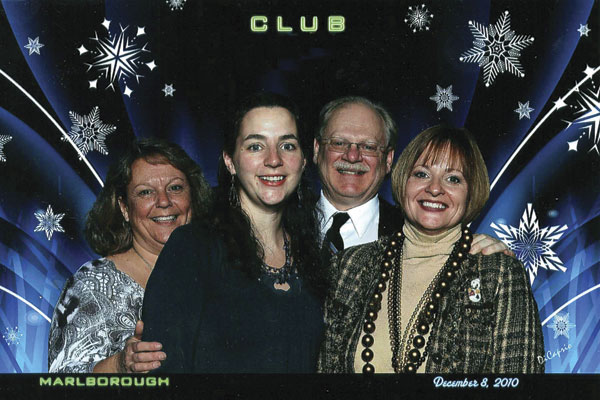It Is The Basic Need Of Every Business, To Decrease The Cost And Increase The Profit Ratio, Which Is Only Possible Through Proper Marketing.The Shared Information Regarding Marketing And Increase The Selling Ratio Are Good. By Using The Services Of Social Media Agency You Can Get More Business Marketing.
The World Of “Event” Photography; Marketing, Selling, And What It Takes Page 2
When it comes time to make use of our database and advertise in-studio specials, we rely primarily on direct mail and e-mail. By identifying the leagues and schools with the best clientele, we generate a mail list that is sorted by a database. That way when we are running specials like our “Story Time with Santa,” we can send out advertising to families who have children under the age of 10. This makes our advertising much more targeted. We can also promote our classic “Five-year Portrait” that captures the fun and innocence of a young child before losing their baby teeth and growing into a young preteen. With the information that we collect on our event forms, we can market directly to families who have 5 year olds. The goal is efficient marketing.
That being said, we don’t ignore Facebook and website marketing. We think of them as secondary marketing that backs up the primary marketing with links from the e-mail marketing to the website to offer more information. With the advent of social media sites like Facebook, I feel like the “seven degrees of separation” has been pared down to only four degrees.

Bob DiCaprio: I have found that the best form of marketing tactics has been referrals that have come from a few sources. First, I have booked additional jobs while at other events. Guests see what we are doing and contact us to do the same type of work for them. Second, a good source for jobs has been event planners who incorporate our services into their events. Third, I have also gotten several referrals from our Convention and Visitors Bureau, as well as other photographers who do not offer the on-site printing that we offer. It is important to get yourself in front of potential clients. When we first started back in 1997, we made sure we did events by discounting our services (on the first job only) to organizations and events that we felt would lead us to other clients.
SB: To what degree is the web an essential part of getting and fulfilling client print orders? What web partners or lab partners do you work with for order fulfillment?
Bob DiCaprio: The web-based order fulfillment is not part of my event photography for a couple of reasons. First, my corporate clients want the images printed on-site, so there is no advantage to having web-based order fulfillment. Although I have posted images after an event for reorders, there just aren’t any reorders to speak of. The amount of reorders is so low it doesn’t cover the cost of the posting.
For events like schools, proms, action sports, and sport leagues I would only use online order fulfillment for reorders and specialty items. You must make the sale at the event, as that is when you will maximize the potential of the order. If you don’t make the sale at the event, there is a good chance you won’t make it after the event online. If you do make the sale, I think your average order would be less than it would be on-site. The impulse sales, along with sound sales techniques, are gone when they can order online. Plus, I feel that once the images are posted, they can have their entire family check them out online, and once everyone has seen them, the need to purchase is substantially diminished.
We do post our candid images from our high school sports program, and we use the services of Miller’s Professional Imaging to host and fulfill. Our sales from these images barely cover our cost of hosting and printing.
Jeff Bowman: Even though we do our own printing for our portrait work, we use H&H Color Lab for our sports orders and specialty products. When doing event photography, the volume is too large and has too many specialty products to print in-house. H&H has ordering software made for sports products.
Dutch Walters: We do not use the web for our bride and groom’s package; we keep that work in-house. We also do not use the web for event/client-based work; all of our customers take our work on a limited release for use in corporate reports and website enhancement.
The web is absolutely essential to order fulfillment and enlargement. We are in a partnered relationship with Zenfolio; we have selected Mpix and MpixPro for our print orders. We do all of the editing and refinement before we upload the finished goods to Zenfolio. They take the ball from there for us. What the Zenfolio site does for us is get the images in front of all of the participants of the event.
When a guest takes a picture with a celebrity involved with the event, Zenfolio helps us get it out in front of these folks with an easy order process. We shoot and prefer not to take the time printing and processing images, paying a small percentage for someone else to do it is a real time saver. Web service such as Zenfolio also gets the wedding day photos in front of all the guests; it also gets the images in front of family members who missed the “show.” Bottom line to web-based sales: it makes a positive influence to our cash flow.


SB: What professional recommendations would you make to a photographer looking to make a career move into this field?
Bob DiCaprio: Be a good photographer so that you can handle a variety of events both indoors and outdoors. You must be outgoing and like working with a variety of people. I have worked at events with thousands of people, and have worked with quite a few nationally known celebrities, politicians, sports figures. You need to be able to adapt to constantly changing personalities and situations. If you can’t do this, then don’t get involved in volume event work.
You must be a good computer technician. When working with on-site printing, you are often faced with technical problems that need to be addressed quickly. If you don’t understand your software and hardware, you won’t survive the inevitable software glitch or hardware breakdown. If you’re going to go national with your work, then you need a good network of professionals and helpers who you can call upon to assist at events. Invest wisely in quality software and equipment.
Be corporate savvy. The public relations, corporate affairs, and marketing people who are going to hire you do not work like photographers. Their deadlines change constantly, as well as their needs. Budgets and dates can be moving targets. You must be willing to adapt to these changing situations on a moment’s notice and keep smiling all the time.
Don’t be afraid to charge a fair fee for your work. Event photography isn’t always the most creative work you do, but you are worth a fair fee. Large-scale events take a lot of logistical time to plan and execute, and you need to get paid for this preliminary work. If you’re getting started set a fee that takes into account all that you are going to do. Make sure clients understand your value. Then, if you want to book a job because it is good exposure, you can discount the fee as a first-time courtesy. Your client will understand what you are doing, and will not be as apt to balk when they hire you for another event at full price.
Dutch Walters: Our most important recommendation is just this: “If it’s not a passion, if it doesn’t make you sweat, go find something that does.” Event photography is a no mulligan operation; you don’t get CEOs to hold onto a sincere moment so you can get ready. Yes, you can get the bride and groom to kiss over and over but no one is going to pay for a second wedding because you didn’t have your act together.
It’s extremely important to have a thorough understanding of what the client wants and needs as they may not be the same. Also, never go into a project without a valid contract. We have planned projects that spanned multiple sites and multiple dates with different requirements, so a detailed shot list is a must.
Last, understand your field; event photography is not like a studio shoot. Event photography is fluid and changes minute to minute. Understand your equipment to the point that you can both see and repair problems before you end up with a blank card and an empty client list. Many events prohibit flash photography and tripods are bulky so use equipment geared to clean high-ISO shooting.
Jeff Bowman: Most of the photographers who I know are self-employed. Before starting your own photography business, please realize one thing: you must love the business of photography more than you love photography itself. By our nature photographers are artists. Most artists are right-brain dominant and business is a left-brain game. This is why we have the term “starving artist.” Make sure that running a business is what you really want to do. Then force yourself to go about it in a left-brain way.
- Log in or register to post comments



Marketing Is The Most Important Factor Which Plays A Vital Role In Succeeding A Business. By Marketing Of Your Products You Can Get The Desired Task From Your Business. Web Designers Are Also Playing A Big Role In Business Promotion By Creating Attractive Designs. To Achieve Your Desired Task Regarding Business Promotion With The Help of attractive Designs, You Just Need To Shared The Following Source:http://www.bitwords.com/

















































